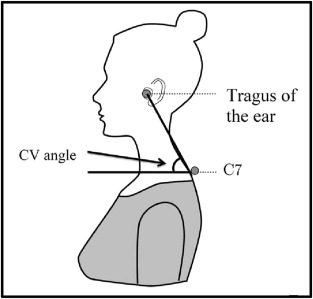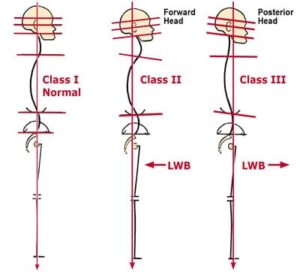

In today’s tech-heavy world, it is all too common to catch ourselves hunched over our phones or slouched in front of a screen.
One of the most subtle but impactful consequences of this lifestyle is forward head posture (FHP). What might seem like a minor misalignment can significantly affect the natural curve of your cervical spine, leading to discomfort, pain, and long-term structural changes.
In this article, BestForwardHeadPostureFix research team shall explore the effects of forward head tilt on cervical curvature, delve into the anatomy involved, and look at how this condition develops, its health consequences, and most importantly—what you can do about it.
Whether you are dealing with neck pain or just want to improve your posture, this guide will help you better understand your spine and how to care for it.
Contents of this Article
- Understanding Forward Head Posture
- The Anatomy of Cervical Curvature
- How Forward Head Tilt Alters Cervical Alignment
- Health Consequences of Altered Cervical Curvature
- Assessing Forward Head Posture
- Long-Term Effects of Forward Head Posture on Spinal Health
- Lifestyle Factors Contributing to Forward Head Posture
- Effective Strategies for Correction and Prevention
Forward Head Posture – What it has to Offer?
Forward head posture happens when the head begins to drift in front of the body’s center line, placing extra strain on the neck muscles and spine.
If you have ever noticed someone’s ears lining up ahead of their shoulders instead of over them, that’s a classic sign of FHP.
This issue typically stems from habits like looking down at your phone, slouching at your desk, or even just poor sleeping positions.
Over time, the body starts to adapt to these positions, turning a temporary posture into a chronic issue. As minor as it seems, even a small shift in head alignment can have a massive impact on your cervical spine.
The Anatomy of Cervical Curvature
Your cervical spine consists of seven vertebrae, labeled C1 through C7, which form a gentle, natural curve called the cervical lordosis.
This S-shaped curve serves a vital purpose—it helps support the weight of your head, which averages between 10 to 12 pounds.
The curve functions like a built-in suspension system, distributing the head’s weight evenly across your spine and muscles, minimizing strain, and allowing for smooth, flexible neck movement.
When the cervical spine maintains its proper alignment, it contributes to healthy posture, optimal breathing, effective nerve communication, and even proper blood flow to the brain. However, poor posture—especially forward head tilt from prolonged screen use or improper ergonomics—can reduce, flatten, or even reverse the cervical curve.
This misalignment may lead to a domino effect, contributing to muscle strain, neck pain, tension headaches, and spinal degeneration.
Over time, it can also impact the thoracic and lumbar spine, disrupting the body’s overall balance and function.
How Forward Head Tilt Alters Cervical Alignment?
When your head tilts forward—say, while texting, scrolling, or pretending to be interested in a Zoom meeting—it throws off your center of gravity.
Your body, trying to be helpful, compensates: the lower cervical spine bends more, and the upper part hyperextends.
The result?
That graceful cervical lordotic curve straightens out or even flips into a reversed (kyphotic) curve.
Not exactly the plot twist your neck was hoping for.
This spinal drama increases pressure on your discs and joints, turning your neck muscles into overworked, underappreciated heroes.
They tighten, they tire, and meanwhile, other muscles get lazy and weak. This imbalance creates a vicious cycle—bad posture begets more bad posture. It is like a game of anatomical Jenga: one piece shifts, and the whole structure gets wobbly.
Bottom line? Your neck was not built to be a human periscope. Keep that head in check—your spine and sanity will thank you.
Health Consequences of Altered Cervical Curvature
Disturbing the natural cervical curve does not just mess with your posture—it can set off a cascade of uncomfortable and even debilitating symptoms.
That elegant S-shaped curve in your neck is designed to balance and absorb forces efficiently.
But when it is flattened or reversed, your body pays the price.
- Neck and Shoulder Pain: Overstressed muscles are forced to support your head without the help of proper alignment, leading to chronic tension, stiffness, and soreness.
• Tension Headaches: The suboccipital muscles at the base of the skull often bear the brunt of poor posture, resulting in frequent headaches that creep up from the neck.
• Numbness and Tingling: Misaligned vertebrae can compress nerves, causing pain, numbness, or tingling sensations that radiate down the arms and into the hands.
• Jaw and Facial Tension: Cervical misalignment can strain the temporomandibular joint (TMJ), leading to jaw pain, clicking, or tight facial muscles.
• Fatigue and Poor Concentration: Constant muscular strain and low-grade pain sap energy and mental sharpness, making it harder to stay alert and focused.
Left unaddressed, these issues often worsen, potentially leading to degenerative disc disease, arthritis, or chronic nerve compression. A healthy curve equals a happier, pain-free you.
Assessing Forward Head Posture
One of the most common and effective ways to assess forward head posture (FHP) is by measuring the craniovertebral angle.
Imagine drawing a horizontal line through the prominent bump at the base of your neck—your C7 vertebra.
Then, draw another line from your ear’s tragus (that little nub in front of the ear canal) to the same vertebra.
The angle between these two lines is your craniovertebral angle. The smaller the angle, the more your head is jutting forward—like a turtle poking out of its shell.
For example, if someone has a craniovertebral angle of 50 degrees, that’s considered fairly normal.
But if it drops below 48 or even 45 degrees, it signals a noticeable forward head posture. Clinicians may also use side-view photos or X-rays to get a clearer picture of the cervical curve and head alignment.
Forward head assessments help physical therapists and chiropractors tailor treatment plans and track your progress over time.
Long-Term Effects of Forward Head Posture on Spinal Health
Prolonged forward head posture (FHP) doesn’t just stop at your neck—it sets off a chain reaction throughout your entire spine. As your head shifts forward, your body instinctively tries to maintain balance by rounding the shoulders and upper back.
Over time, this can lead to thoracic kyphosis (an exaggerated upper back curve) and even compensatory changes in the lower back, such as increased lumbar lordosis or flattening.
These postural adaptations may seem subtle at first, but they place excessive strain on the spine’s structures.
Over the years, this added stress can accelerate wear and tear, contributing to degenerative disc disease, cervical spondylosis (arthritis of the neck), and even spinal stenosis—a narrowing of the spinal canal that can pinch nerves.
The result?
Chronic neck and back pain, stiffness, reduced mobility, and a higher risk of nerve compression.
What starts as a small misalignment can snowball into serious long-term spinal health issues if left uncorrected.
Lifestyle Factors Contributing to Forward Head Posture
Modern lifestyle habits are a major contributor to FHP. Here are a few key culprits:
- Excessive Screen Time:
- Constantly looking down at phones, tablets, or laptops places the head in a forward position.
- This repetitive posture strains neck muscles and flattens the natural cervical curve.
- Poor Workstation Setup:
- Desks, chairs, and monitors that aren’t at eye level cause people to lean forward or slouch.
- Over time, this creates muscle imbalances and reinforces poor posture.
- Sedentary Lifestyle:
- Prolonged sitting weakens the core and postural muscles that support the spine.
- Lack of movement makes it difficult to maintain upright posture throughout the day.
- Heavy Backpacks or Purses:
- Carrying uneven weight, especially on one shoulder, causes the spine to tilt and the head to shift forward for balance.
- This can lead to muscular strain and postural misalignment.
- Lack of Postural Awareness:
- Many people are unaware of how often they adopt poor postural positions.
- Without conscious correction, bad habits become the default.
By identifying and addressing these daily habits, you can take the first step toward better posture.
Effective Strategies for Correction and Prevention
Thankfully, FHP is manageable—and often reversible—with the right approach. Here are some of the most effective strategies:
- Ergonomic Improvements: Elevate your screen to eye level, keep your keyboard and mouse close, and use chairs with proper lumbar support.
- Stretching and Strengthening: Daily exercises like chin tucks, neck extensions, wall angels, and upper back rows can help correct muscular imbalances.
- Mindful Posture Checks: Set reminders to check your posture throughout the day. Apps and posture correctors can also help reinforce better habits.
- Yoga and Pilates: These movement-based practices improve core strength, flexibility, and body awareness.
- Regular Movement Breaks: Even just standing and stretching every 30–60 minutes can offset hours of sedentary activity.
Consistency is key. Over time, small adjustments can lead to big changes in how your neck feels and functions.
Conclusion
Forward head posture might appear to be a small, harmless habit, but its long-term impact on your cervical curvature and spinal health is anything but minor.
The natural curve in your neck—known as cervical lordosis—is crucial for absorbing shock, maintaining balance, and supporting the weight of your head.
When your head consistently leans forward, this curve flattens or even reverses, leading to strain, stiffness, and a cascade of postural issues throughout the spine.
Recognizing the signs early—such as neck pain, headaches, or shoulder tension—is key to preventing more serious problems like disc degeneration or nerve compression.
By understanding your anatomy and how posture affects your overall well-being, you can start making proactive changes. Simple daily adjustments, like improving ergonomics and staying active, can go a long way.
Whether you are already feeling the effects or simply want to maintain a healthy spine, now is the time to take control.
References:

